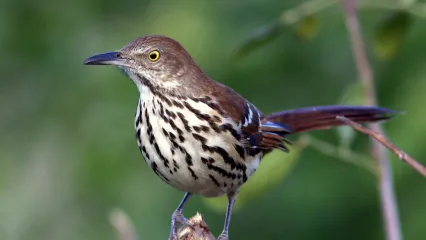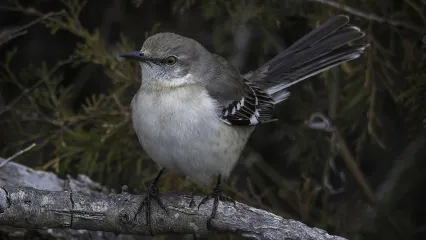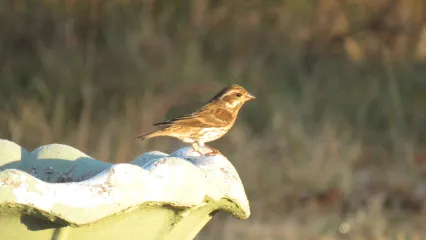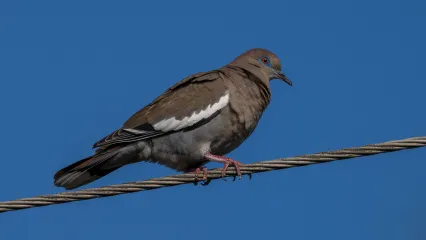
Description
This is a robin-sized songbird with reddish-brown upper parts (head, back, wings and tail) and a long tail. Each wing has two white stripes or bars. Its chest, belly and sides have a pale background color and many heavy brown streaks. Its bill is long, slender and down curved. Its eyes are yellowish. Brown thrashers are easily confused with the smaller hermit thrush, which has no wing bars, a shorter bill and tail, a spotted breast, white eye rings, and a rusty brown plumage on its wings and tail only.
Size
Approximately 9-12 inches in length. Wingspan of 11.4-12.6 inches.
Habitat
This songbird is most commonly found in the eastern two-thirds of the state. Thrashers prefer thickets and abundant shrub cover and can be found in open woodlands and riparian woods. Although uncommon, it may winter in residential neighborhoods with sufficient cover. Brown thrashers are difficult to attract to backyard feeders but providing deep leaf litter around shrubs and trees will help attract them.
Life Cycle
At feeders, brown thrashers eat fruits (dried berries, raisins, currants and apple slices) and miracle meal. Occasionally, the birds will eat shelled nuts and sunflower seeds. Away from feeders they forage on insects and fruit.
How To Observe
Brown thrashers usually forage alone, staying close to the ground under the cover of trees and shrubs. They often search through fallen leaf litter for insects and berries. They may be attracted by offering fruit on a platform style feeder just above the ground and near heavy cover.


